STEM Career Profiles
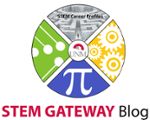 Our goal is to get students to understand that the path to their careers and success is not always a straight line; to highlight the broad possibilities for them with STEM degrees, outside of the traditional or obvious pathways; to think about their STEM education in a way that they may not realize; and to encourage them to persist despite challenges they will encounter. We want students to realize the possibilities of their STEM education.
Our goal is to get students to understand that the path to their careers and success is not always a straight line; to highlight the broad possibilities for them with STEM degrees, outside of the traditional or obvious pathways; to think about their STEM education in a way that they may not realize; and to encourage them to persist despite challenges they will encounter. We want students to realize the possibilities of their STEM education.
We are excited that the first post on our new website, and our very first STEM Career Profile is of no other, than our very own US Senator, Martin Heinrich.
(Click HERE for more info on our re-occurring blog topics.)
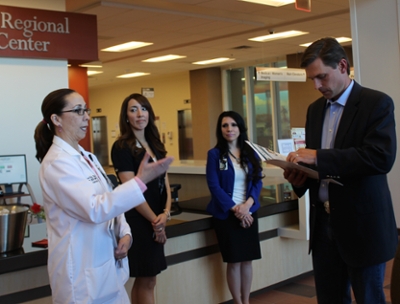
(Above: U.S. Senator Marin Heinrich tours the UNM Sandoval Regional Medical Center to discuss outreach efforts in the community and the latest technology the center is using to treat patients, February 21, 2014.)
Before becoming a U.S. Senator, Senator Heinrich earned a Bachelor of Science degree in Mechanical Engineering at the University of Missouri.
Here is what Senator Heinrich had to say about the challenges of getting a STEM degree and how he utilizes his degree as a senator:
Want to know more about Senator Heinrich? Read his biography HERE.
Heinrich.Senate.Gov
Twitter.come/MartinHeinrich
Facebook.com/MartinHeinrich
Instagram.com/senatormartinheinrich
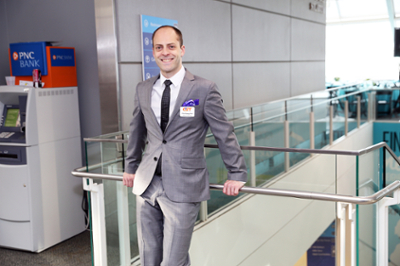
A. Chris Eppig, Director of Programing at the Chicago Council on Science & Technology
Q. What does your organization do?
A. We’re a non-profit organization and our mission is to raise public science literacy. We are not a school or museum, so we don’t have a physical facility where we can do anything, but more of a liaison between scientists and the people.
Q. What do you do on a daily basis?
A. There isn’t a normal day for me. In non-profit, you have to do your own specialization, but on top of that, you do whatever needs to get done, no matter what it is. Generally, what I’m doing is planning, organizing, and executing public science education programs. That involves deciding what topic to cover, when and where to have the event, speaking with venues to see if it’s possible and can be free, finding scientists who can talk (and talk well), and creating certain materials for marketing for the website and things like that. I also do a bit of grant writing, usually more to do with writing pieces of grants that other people are involved in, or reviewing grants, or coming up with ideas for new grants to apply for. I also do program evaluation, so I create surveys for people who have attended our events to see if they liked it, learned from it, things we need to fix and do the same. I also run the programs themselves, which is the best part of my job, because it’s super fun to do that.
Q. What best part of your job?
A. The best part of my job is there is a program series we’ve been doing since December, which is a twice a month program with a scientist talking in a local bar. This program is my baby and was my top priority when I got the job, and I’m the one in charge of running it. It’s also fun going to them because its science in a bar, the audience likes them, they are fun and less stressful to organize and it’s the talk and then people just talking and hanging out after talking about science. It’s fun to see people get excited about science and learning. That’s why I have this job.
Q. What degrees have you earned and from where?
A. BA in Biology from Earlham College, PhD in Biology from UNM
Q. When you were working towards your first degree, did you ever imagine that you would end up where you have?
A. [laughs] Not where I am now. I didn’t really have a plan beyond grad school. I had no idea this type of job was even a thing when I was in undergrad.
Q. What took you from your first degree to the point you are now? In other words, what was your career path?
A. I always wanted to be a scientist, so when I was in undergrad, I always planned on getting a PhD to do research. The really short version is I ended up not doing research, but instead going into science outreach because I wanted to help the public learn about science and not just teach biology majors about science, so now I have this job. I took one year off between degrees where I was a substitute teacher at my old high school and I was a technician at an environmental consulting firm.
Q. What were some of the significant challenges you encountered along the way?
A. Two biggest obstacles were: 1) deciding to leave academia, because that was a difficult thing to do psychologically because being a scientist was always a big part of my identity. Deciding to not pursuit a research career was really hard for that reason. I had literally spent my entire life trying to become that and then being ok with deciding to do something else was very tough. And 2) figuring out what I had to offer a non-research field. I had been in grad school immersed in academia and had no ideas what the outside world was like, how I could present myself, or even what was out there, outside of academia.
Q. How did you overcome these challenges?
A. It was a matter of time and getting used to it, and an awareness of the things about academia that I didn’t like, so wouldn’t miss, and the things I wanted out of my alternative career that I would be interested in. The other thing, for the second challenge, was I took an online class on transitioning to a post-academic career.
Q. What would you say are the key milestones in your career pathway?
A. The first wasn’t an event, but a slow realization, and that was coming to terms with how poor adult science literacy is in this country. Regularly in grad school there would be news articles that were things like “1 in 5 Americans believe the sun revolves around the earth”, and that was appalling to me over a long period of time, rather than a single event. The second came when I was starting to research other possible jobs and I saw science outreach listed as a possible job. I didn’t know that was a thing, but that was a place I could go that I could be happy. The third is taking that course in post-academic careers. This course gave me all the tools I needed to find and get a job.
Q. What advice would you give to an undergraduate student in a STEM field?
A. That’s a really broad question. I guess if I can modify the question slightly, I had a lot of students ask me when I was teaching if they should go to grad school. I told them that they should get a PhD, but only do it if they really, really need to. If there is another way they think they can be happy personally and professionally, then they should, but if they need to, go for it. If they do pursuit a PhD, either want to get a job outside of academia, or if you want to do academia, have a strong back-up plan. Having a degree doesn’t mean you are guaranteed to do research or teaching.
Q. Is there anything else you’d like to add that we haven’t addressed?
A. Nothing comes to mind.
Dr. Eppig also provides a unique perspective on many issues within STEM, which you can read all about on his blog HERE. And learn more about Dr. Eppig himself via his LinkedIn profile HERE.
To learn more about the Chicago Council on Science & Technology, click HERE.
This particular profile is not just STEM, but is a special “STEAM” approach (A = Art). Adam wanted us to expand the definition for this profile to highlight the multidisciplinary approach, which expanded the applications of core science knowledge and has allowed his STEM knowledge to help him look at the art processes differently. He is excited to be a part of this change!
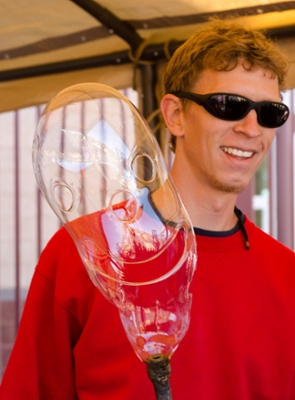
A. Adam Frus, owner of Frus Glass, a glass blowing and mineral sales company
Q. What does your organization do?
A. I create fine art that bridges the gap between art and science. I do this by incorporating mineral specimens into my artwork or by decorating my pieces with geological themes such as cross sections and topographic lines. Most recently, I have been making a series that pays homage to chemistry and the minerals that are utilized to produce color in glass. I also sell mineral specimens on their own at various rock & gem shows, and I contract as an educator to give lectures to children and adults about the core concepts of geology, paleontology and the chemistry of glass.
Q. What do you do on a daily basis?
A. Outside of being a stay-at-home dad (4.5 year-old girl), I spend a lot of time designing work in my sketch book and formulating concepts on how to artistically integrate geologic principals into my art work. To do this I am constantly reading scientific papers and following the progress of those institutions that have active physical modelling laboratories (i.e. faulting experiments). Also, as an avid mineral collector I regularly go into the mountains for mineral digs. This passion has led me to become a member of the Albuquerque Gem & Mineral Club (AGMC) - an organization for which I serve as Secretary on the Board of Directors.
Q. What best part of your job?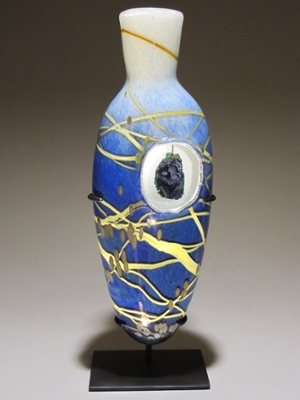
A. Outside of actually selling work, it’s the many conversations that I get in with adults or, even better, high school students about to go into college. This is where I can show them the application of some of the science that I studied. Most often that comes into scientific literacy and having a baseline of knowing methods on how to do research through scientific literature and text books. For example, in order to decide what type of mineral specimen to use in my artwork, I will submerse myself in that mineral’s chemistry, its locality, and the geology of the surrounding area. Then I have to go through a similar process to make sure that there is a chemical similarity between the glass colors that I use and the mineral that I have chosen. The conversations that ensue are a good way to get people excited and interested in collegiate or continuing education programs in the sciences or in art.
The other thing I really like doing is public demonstrations. I own (and built from scratch) a mobile glass blowing studio that I can take on the road for special events. During demonstrations I create wonderful art in front of live audiences, but also, because of my scientific nature, I always include small tidbits of lecture about the glass chemistry or I do small demonstrations that explore the physical properties of glass; temperature dependent viscosity changes, material stress induced through cooling, the creation of fiber optics and even a bit about that thickened ridge that you may see around the top of a wine glass. Over the years, I have found that what I do with glass is limitless as long as I understand the parameters of the material that I work with.
Q. What degrees have you earned and from where?
A. I have a Bachelor’s of Science (2007) in Geology from Arizona State University
Q. When you were working towards your first degree, did you ever imagine that you would end up where you have?
A. Yes and no. I was introduced to glass right around the age of 16 (sophomore year) and it was that experience with molten glass that made me pursue geology, with an interest in volcanology specifically. When I graduated (undergrad), the competition in the field was very intense and I was already into the glass blowing at two local studios in Arizona. It was during that time that I first began to develop the concept of using my art to talk about the things I was learning at school. That made sense to me and it allowed me to take the role of an informal educator, a position that has always been in my line of sight.
Q. What took you from your first degree to the point you are now? In other words, what was your career path?
A. A major factor in my career path was support from my wife, Becky (we got married when we graduated). At that time, we decided that she would stay at ASU for a master’s in Geoscience Education and that I would continue trying to push into art since I had already started down that path. She is now a PhD candidate at the University of New Mexico in the geosciences and through it all, she has continued to push me to go in this direction as an artist. Her degree- and my involvement with it- keeps me invested in the field of geology. When she has field research to do, I often go along as a field assistant (our daughter does too). Inversely, when I turn on my glass studio for a four-day session, Becky often works with me as my glass assistant. We work really well together.
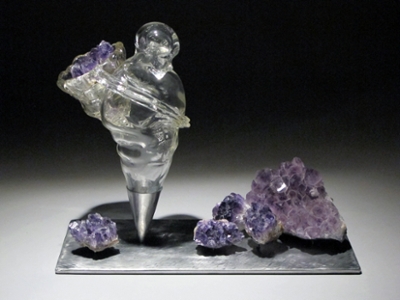 Q. What were some of the significant challenges you encountered along the way?
Q. What were some of the significant challenges you encountered along the way?
A. One is how to communicate, to the public, the complex ideas and concepts of geology that inform my artwork without being too literal and keeping the “art” in it. It often needs a deeper conversation to express how they are connected and that is not always conducive to sales... unless we get the chance to talk about the work. Additionally, the integration of mineral specimens has been an uphill battle; to understand the chemistry behind it, but also how to treat the specimens as a mineral collector would, rather than degrading them for the art. What I represent in my work are collectible minerals, not broken chunks of them. That has led to its own challenges because art consumers don’t always want to purchase minerals, and vice-versa. On the other hand, everyone enjoys the conversations that ensue. The only other challenge that I face is being an artsy artist. I was into science first, which leads me to be analytical in my designs. My mentors have to remind me to put the “art” up-front and the science in-back, but I constantly struggle with the desire to do it in the opposite direction.
Q. How did you overcome these challenges?
A. The first is with perseverance. I am still in the process of building a niche for the glass and mineral combination. The second is that I listen to a lot of mentors in the art field to learn “the game” of galleries, sales techniques and about how to project that aura of an “ARTIST.” And third, I seek out scientists and geologists that do interesting things to make sure that I understand the chemistry or processes that they are working with. For example, I did some faulting experiments (sandbox models) that were produced in glass. Those objects were then taken to Karl Karlstrom at UNM to be fully interpreted so that each structure would be labeled properly.
Q. What would you say are the key milestones in your career pathway?
A. As an artist, the first major milestone was to become an Artist-In-Residence at the Mesa Arts Center in Arizona. That experience gave me time and resources to explore new techniques without the full monetary expense of studio ownership. Following that, I would include acceptance to galleries and a few awards at art shows.
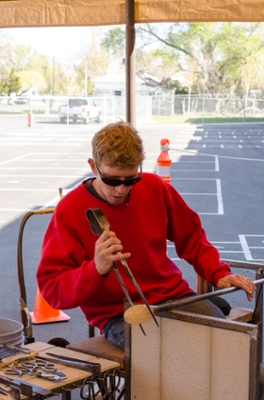
As for incorporating STEM knowledge into the art, there are two major accomplishments that I can think of. The first is the creation of an award-winning display that I call “The Minerals of the Glass Industry.” It features examples of colored glass and the mineral specimens that serve as the primary ores of chemical elements that are used as colorants in the glass industry. It also features examples of naturally-formed glasses (fulgurites, obsidian and tektites) and the primary minerals that are used for the creation of Soda-Lime glass itself.
The second STEM accomplishment was being recognized by AGI (American Geosciences Institute) and being selected to produce a series of awards for their outgoing presidents. To this end, there was also an article in their publication, Earth Magazine about me and that process. I feel that this was a major recognition by the science community as a whole, which is just as important to me as an art collector purchasing something for their home. It lets me know that I am on the right path.
Q. What advice would you give to an undergraduate student in a STEM field?
A. First, I would say get involved with your professors, even professors that you are not taking classes from. It’s something I didn’t take advantage of as much as I wanted to during my undergraduate education. Find researchers that will give you a chance, even if that available position does not seem to “fit” directly into your perceived career path. Working directly with a mentor will make you apply all the concepts that you are learning in your classes and give you real world experience as well. Secondly, step back and recognize the beauty in what you are studying. If you see something amazing when you look to the horizon or down through a microscope, consider using that image for decoration or in some other way so that people who aren’t studying what you study can see it and ask a question. It is well known that any time you explain something to another individual, that you get a deeper understanding of it for yourself.
Q. Is there anything else you’d like to add that we haven’t addressed?
A. I would like to thank Gary Smith (UNM) for recommending my inclusion into these STEM Gateway Interviews.
Website – www.frusglass@gmail.com
City of Residence – Albuquerque
Email – frusglass@gmail.com
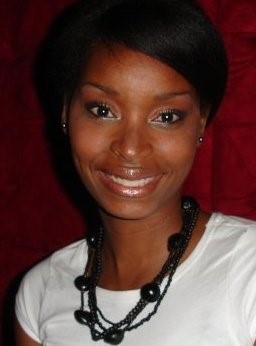
A. J’Tia Hart, Technical Nonproliferation Specialist, Argonne National Laboratory, Global Security Science Division.
I’m a nuclear engineer by training, but because of my work on non-proliferation, the more appropriate title is technical non-proliferation specialist is the more appropriate term.
Non-proliferation relates to policies and approaches to stop the spread of weapons of mass destructions. It ranges from putting together an agreement for certain nations to stop the spread of nuclear weapons, or scientists working on a machine to get adequate measurements to make sure nuclear material is where it needs to be. It ranges from policy to all technical aspects.
Q. What does your organization do?
A. We are a Department of Energy funded research and development center. Our job is to do science, with different focus areas. The focus area that I fall into is National Security, we also have Bioscience, Accelerator Test Facility (ATF), energy security, and environment focus areas. We do big things in science.
Q. What do you do on a daily basis?
A. Two days are never the same, which is what I like about it. But it’s either in the office or out. In the office is analysis and research to support development of nonproliferation policy. For example, today I took time and looked up technologies that had non-proliferation implications, and had a teleconference with other scientists that are familiar with the topic on how we would assess this technology, based on how it could be used and what assessment criteria is valid. I am also planning a nonproliferation seminar for people who work in the federal complex. Part of my job is assessment and learning, and the other part is teaching and outreach. I do the same type of things out of the office. For example, in a few weeks I’ll have a larger meeting at Los Alamos National Labs, and a few weeks later I’ll be in Ghana to collaborate on growing nuclear infrastructure to support nuclear power development. A cool part is talking to people and the discussions we have. I get to use science and math and I get to work with people to accomplish goals that mean something.
Q. What best part of your job?
A. I work with really smart people which is amazing. And, I get to interact with diverse groups and help people.
Q. What degrees have you earned and from where?
A. A BS in Industrial Engineering from Florida State, and a MS, and PhD in Nuclear Engineering, from University of Illinois at Urbana–Champaign.
Q. When you were working towards your first degree, did you ever imagine that you would end up where you have?
A. No. I didn’t want to be an engineer, I wanted to go into business, but my mom said I should try it. I found out what engineers do and found out how cool it could be. I liked that it wasn’t subjective. For example, with a math problem, you go through the steps. There is some trial and error, but it’s not if somebody likes what you do, it’s based in fact and theory.
Q. What took you from your first degree to the point you are now? In other words, what was your career path?
A. I wanted to do business, but my mom told me to try engineering. Like most girls, I said OK, because I wanted to do something to help people. At first I thought I wanted to do biomedical engineering. The closest engineering discipline to being a doctor. I ended up pursuing chemical/biomedical, and it wasn’t what I thought it would be. I changed to industrial because it was more systems and putting technical systems together. It is how things fit together in a larger sense. I change from industrial to nuclear as a result of being in Navy ROTC. When I went on a nuclear submarine, it had both nuclear power and weapons, this technology has a dual purpose: to provide power for years at a time, and the same power and energy source, could destroy things. I knew that it needed to be controlled and I could do that, and help people. That is how I got into non-proliferation.
Q. What were some of the significant challenges you encountered along the way?
A. In engineering, there is a certain stereotype, or demographic, and sometimes when you are not within that demographic you feel alienated, whether it is real or perceived. This is something I encounter to this day. That doesn’t foster involvement and collaboration. I used to be terrified of speaking up, and then I purposefully decided to be more confident. Now I have gotten the remark that “you’re so confident.” And I’d much rather have it that way.
Q. How did you overcome these challenges?
A. I tell this story pretty often. When I was in graduate school and wanted to quit, I took a semester off and had the opportunity to become a fashion model, which seems like a dream career. What I realized while I did that was there are confidence issues with that too. I realized that any goal you want to achieve is going to take work and is probably difficult at times, it’s just a different challenge. I wanted to put the same effort into STEM rather than paying attention to my physical appearance. I made the decisions to be more confident and be fearless.
Q. What would you say are the key milestones in your career pathway?
Q. What advice would you give to an undergraduate student in a STEM field?
A. Look into your opportunities. If you think you are interested in something, do a job shadow. Know what you are getting into, even within your field. If I had to be in a lab, I wouldn’t like it. I had to make sure that within my field and my area, it wasn’t just the subject matter but how I used it on a daily basis. Consider if it is a clock in or free hours setting, working alone or with others, etc. With Women, sometimes we have different factors that are important to us in our work, so that is something to take into account, too.
Q. Is there anything else you’d like to add that we haven’t addressed?
A. Be true to yourself, and true to who you are. Don’t try to conform to STEM or who you think you need to be. The great thing about diversity, is you can add something new. If we all came from the same place, you would get the same answer to a problem.
Want to learn more about Argonne National Laboratory? Click HERE.
What to learn more about Dr. J’Tia Hart and her commitment to STEM outreach? Click HERE.
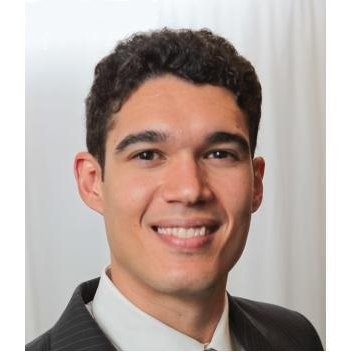
A.George Bezerra, Data Scientist at TripAdvisor
Q. What does your organization do?
A. TripAdvisor is the biggest travel website. It provides reviews of hotels and places you can visit, and you can also book hotels, restaurants, flights – It covers all the different sections of traveling.
Q. What do you do on a daily basis?
A. As a data scientist, my main job is to build machine learning models (i.e. artificial intelligence) to predict trends, automate tasks, and solve problems that are hard for humans to solve. Some examples are recommender systems (e.g., recommending hotels and places to visit), fraud detection (e.g., detecting fake reviews), and automated bidding in advertisement campaigns. These are all essential tools for the website and the company in general.
Q. What best part of your job?
A. Good question! It’s hard to say one specific thing, but creating the models themselves is the fun part. The process is very scientific. You have to read papers and research about the possible ways to solve your problem, learn about the tools that are out there, collect and analyze the data, and once you have a good approach in mind, proceed with building the model. A big part of my job looks like doing academic research, but it’s more applied. Instead of building something to impress the reviewers, we need to build something that works.
Q. What degrees have you earned and from where?
A. A Bachelors in Electrical Engineering and a Masters in Computer Engineering from University of Campinas, Brazil, and a PhD in Computer Science from UNM.
Q. When you were working towards your first degree, did you ever imagine that you would end up where you have?
A. No, not at all. At the time I knew I wanted to pursue an academic career and a PhD degree, but I didn’t know I was going to live in the United States, nor did I ever dream I was going to end up at MIT.
Q. What took you from your first degree to the point you are now? In other words, what was your career path?
A. While getting my first degree, I wanted to be a professor, so decided to pursue a masters and PhD degrees. However, by the end of a 6-year long PhD I was feeling like I wanted to do something different. I did a post-doc at MIT in a somewhat different area and got involved in big data and data science. During this time I collaborated with several partners in the industry and I realized that they were solving some of the most interesting and challenging problems of today. I saw an opportunity for a career change and I decided to take the risk. I am pretty happy that I made that choice.
Q. What were some of the significant challenges you encountered along the way?
A. In academia I was working too hard and I didn’t feel like my work was having the impact I wanted. I was frustrated with the review system for publications and grants and I saw myself working hard in order to increase my number of publications, not because I though the work was interesting and fun.
Q. How did you overcome these challenges?
A. It took me a while to understand this, but the right solution for me was to change career paths.
Q. What would you say are the key milestones in your career pathway?
Q. What advice would you give to an undergraduate student in a STEM field?
A. In general, that depends on what the student wants. But here is something I learned. Keep your options open. If things are not working out the way you expected, don’t be afraid to branch out and look for other possibilities. In my case, I was stuck in academia even though I wasn’t enjoying it anymore, and I never thought the industry was a valid option. Most academics have a very naïve idea of what the industry looks like; in general, we dread the idea of having a boss and working regular hours. But as I discovered, the working hours in the industry are more productive and you end up with a lot more free time for yourself, there are plenty of exciting problems to work on, and the impact of your work is more substantial. Plus, the pay is better and you have more flexibility to choose the city where you want to live. If you’re not happy where you are, don’t be afraid to make a change.
Q. Is there anything else you’d like to add that we haven’t addressed?
A. It’s good to know in advance that the career path is not necessarily linear. This is definitely my case, I changed areas more than once, and in the end, it is because of this varied background that I was able to get my current job, which I love. They say data scientists are unicorns because they combine so many different skills in a single person, which is really hard to find. We are now in high demand in the market and there are tons of job opportunities out there. I think that this turned out to be a great thing in the end.
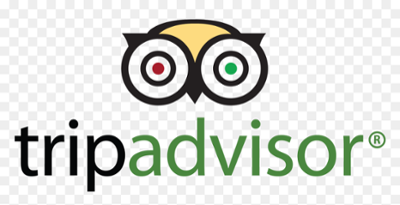 <-- Click
<-- Click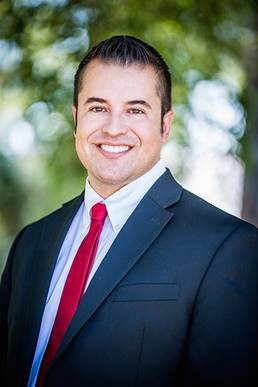
A.Dr. Kenneth Armijo, Staff scientist and R&D system engineer for Sandia National Laboratories, the Department of Concentrating Solar Energy Technology
Q. What does your organization do?
A. We are one of two labs that do solar energy research and development for the department of energy. Sandia leads new research in solar energy that produces technologies that impact everything. We develop energy technologies, intellectual property technology & patents, and help start companies which impact the energy industry and consumers, as well as government and utilities. We also develop new technology, policy, and codes & standards that influence how solar energy technology is used.
Q. What do you do on a daily basis?
A. I do fundamental science research that can improve the performance, reliability, and adoption of new and existing solar energy technologies. In addition, I also do a lot of experimental research that validates fundamental science to prove the viability of new solar energy technologies so that they can impact energy markets and renewable energy policy.
Q. What best part of your job?
A. The three main things that I find that I appreciate the most about my job are 1) being able to develop something that’s never been done before with an application of having a large and lasting impact on society, 2) seeing how my work in STEM can impact younger people in trying to push them towards getting a STEM education, and being able to inspire them to become more than what they think they can do, especially poor kids, which I’ve been focused on with my education outreach work, and 3) being able to have the gratitude of knowing that all the work I do and publish is helping to move humanity forward and improve the lives of so many people in both developed and developing countries, as well as impact local New Mexico businesses, not just larger industries and utilities.
Q. What degrees have you earned and from where?
A. Bachelors in Mechanical Engineering with minor in Math from UNM – cum laude. Master’s degree from University of California, Berkeley in Mechanical Engineering with a Management of Technology certificate from the UC Berkeley Haas School of Business, and a PhD from UC Berkeley in Mechanical Engineering with a the Designated Emphasis in Energy Science and Technology certification.
Q. When you were working towards your first degree, did you ever imagine that you would end up where you have?
A. No, not at all. Honestly, when I was growing up, my goal was to graduate high school. I grew up in a small farming community here in New Mexico between Belen and Socorro, which had low graduation and high teen-pregnancy rates. In undergrad I just wanted to graduate and get a job, which I thought engineering was good for. I got internships at NASA’s Johnson Space Center, Sandia National Laboratories, and the Stanford Linear Accelerator Center which changed my mind about stopping after undergrad.
Q. What took you from your first degree to the point you are now? In other words, what was your career path?
A. What guided me was being able to have internships and co-ops. And, having outstanding mentors that really pushed me to go after my dreams. Like working for NASA in the Space Shuttle Program pushed me to go on and get a higher degree.
Q. What were some of the significant challenges you encountered along the way?
A. People trying to dissuade me from going forward and getting a higher degree. People who became complacent with their jobs that tried to push me to not follow my dreams from either fear from their failure or of me failing. Others are having family obligations that made it more challenging to continue. And, a lot of times when you become a PhD at a top university in the world and where you are the only Latino getting a degree in engineering, we have this mentality called an ‘impostor syndrome’ where you feel you don’t belong and you can’t connect with anybody, and where you feel like you are on your own. Psychologically and sociologically that was a challenge. There was a lot of pressure for me to succeed or drop out.
Q. How did you overcome these challenges?
A. My undergrad advisor told me not to get a PhD because I wouldn’t be fit for it. I encountered things like this a lot when growing up, so I took these in stride and found my inspiration from those that told me I was meant for something bigger, focused on the positive and not the negative. What helped me get around the family challenges was seeing how my education and going after my dream could actually make a difference in the challenges my family faced. The opportunity of making a greater impact in my community helped, too, beyond the fundamental science. You only live once in life, so you might as well go for your dream. Aim for the stars, because even if you end up in the atmosphere at least you got off the ground.
Q. What would you say are the key milestones in your career pathway?
Q. What advice would you give to an undergraduate student in a STEM field?
A. Generally, always focus on the technical research you are doing. There are a lot of opportunities that go beyond that, but in order to be successful at those, like business and policy, you must be an expert in your technical field to build true credibility that will let you go further. STEM is a rollercoaster, you can always get off and do other things, but it’s hard to get back on because technology is always changing. So in order to be an expert in it, you have to be in on it as long as you possibly can.
Q. Is there anything else you’d like to add that we haven’t addressed?
A. Always go for your dreams, no matter how audacious they can be. The biggest regret anyone in STEM, research, and life, is never having gone for the dreams in the first place and giving in to those who tell you’ no’.
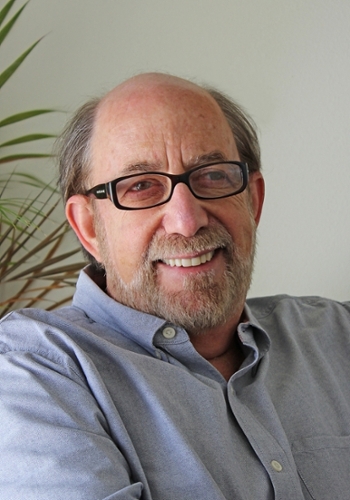
A. Stuart Rose, I have many different positions, but we’ll go with CEO and founder of The Bioscience Center, CEO and co-founder FatPipeABQ
Q. What does your organization do?
A. They are both in the business of encouraging entrepreneurship in different ways. The Bioscience Center (TBSC) focuses on startup companies in biotechnology, with biotechnology being broadly defined. We offer both labs and office space along with significant mentoring and program. FatPipeABQ is more focused on community, collaboration and co-working, where startups find communities of people who help them become successful in their business. Companies currently housed at FatPipeABQ include those doing software development to technical writers and individuals who operate small businesses and coaches, to a company that is doing sidewalk repair. It is a place where any small business with a few employees can find other companies to collaborate and become successful. Effectively everyone helps each other become successful.
Q. What do you do on a daily basis?
A. Start new companies and manage (on a broad scale) the ones that I’ve started. I do little of the day to day managing of any of my companies, I’m more involved in the strategic direction, finding resources, especially funding, and keeping the companies stay on track to achieve their goals. I also do a lot of advising and mentoring.
Q. What best part of your job?
A. Seeing other people become successful.
Q. What degrees have you earned and from where?
A. BA from University of Cincinnati in Chemistry, and a PhD in Chemistry from Wayne State University in Detroit MI.
 Q. When you were working towards your first degree, did you ever imagine that you would end up where you have?
Q. When you were working towards your first degree, did you ever imagine that you would end up where you have?
A. I think very few people ever do. I gave a commencement speech for the School of Engineering last year or the year before, and that’s what I talked about. The theme was… whatever you think you will do, I would bet that it won’t happen. It’s rare for anyone to get in to a job with a degree and do the same thing for their entire career. Things will pop up and you will do something else. Part of the preparation for that is recognizing it.
Q. What took you from your first degree to the point you are now? In other words, what was your career path?
A. That’s a bit too complex to explain. But, the simple description is 1st degree to 1st job. Then I went with opportunities as they presented themselves. I worked on a variety of projects and was promoted a couple of times. I got re-located to a different country. That company was acquired by a new company and I left. I kept getting different jobs with different companies and eventually started my own and went from there. My goal was to have experiences, learn what I liked to do and was really good at doing, and then focus in that direction.
Q. What were some of the significant challenges you encountered along the way?
A. Within a big company, especially if you have a STEM degree, it’s easy to get stereotyped. It was always my mission to use my technical education to manage technology. I worked hard to avoid the stereotypes by talking to my bosses and HR and letting them know I didn’t want to be a lab scientist; I wanted to go beyond that. If you don’t tell them what you want to do, and insist, they will stereotype you, thereby limiting your options.
Q. How did you overcome these challenges?
A. I volunteered for anything that was outside of my normal duties, I got involved in anything I could that was visible to the bosses and colleagues that were outside my area of technical expertise. I recommend this for anyone that does not want to stay in a lab job. If you do, and you like that, there’s little need to put forth those kind of efforts.
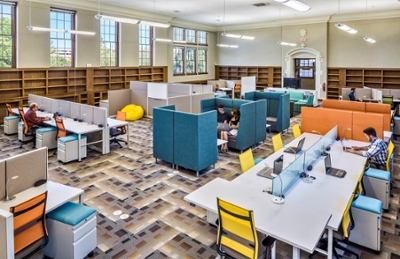 Q. What would you say are the key milestones in your career pathway?
Q. What would you say are the key milestones in your career pathway?
Q. What advice would you give to an undergraduate student in a STEM field?
A. Get an advanced degree. This is less important for engineers, but with a BS in a STEM field only, you are going to be stereotyped and largely limited to doing technician level work for people with advanced degrees. If you want to go beyond that, you have to get one, too.
Q. Is there anything else you’d like to add that we haven’t addressed?
A. I think the key as a person with a degree in a STEM field is you have to be very flexible in what you want to do. It’s a globally competitive space, so somebody from another country can take your job if you are not flexible and open to new ideas. Really listen and try to anticipate how changes in the field will affect jobs in the future.
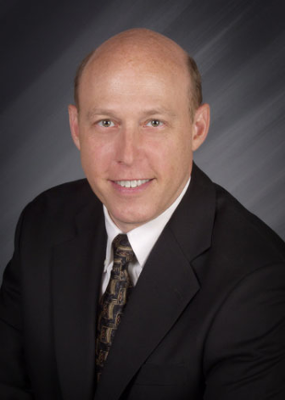
A. Philip Askenazy, Registered Patent Agent with Peacock Myers P.C.
Q. What does your organization do?
A. We are the largest intellectual property law firm in the state. Some examples of intellectual property are patents, trademarks, copyrights, and trade secrets.
Q. What do you do on a daily basis?
A. I draft and prosecute patent applications. I meet with clients to better understand their needs and to discuss their particular situations. In addition I draft IP agreements such as license agreements and assignments.
Q. What best part of your job?
A. The best part of my job is being able to work with lots of different clients and a great diversity of inventions. We get a lot of people who have ideas, including individuals and companies. Many times their invention is not patentable, but some are amazing ideas.
Q. What degrees have you earned and from where?
A. A.B. in Physics from Harvard, and a Ph.D. from Caltech in Applied Physics
Q. When you were working towards your first degree, did you ever imagine that you would end up where you have?
A. No.
Q. What took you from your first degree to the point you are now? In other words, what was your career path?
A. That’s a very complicated question. Basically, everything has to do with timing, performing well, and making connections. Those three things are critical to changing one’s career. While completing my PhD, I quickly learned that I did not want to continue being a scientist. I started my own company in grad school and wanted to pursue something more related to business. I ended up in Albuquerque and was lucky to be here at the right time; STC@UNM, the patent licensing arm of UNM, was just being formed. I was networking and heard about it and got hired there. Patent licensing is a very interesting combination of business and science, and that’s how I got started working with patents. I was there for quite some time and spun out a company that I decided to start based on UNM technology. Unfortunately the first day we started the company was 9/11, so there is the timing thing again, but in a negative way. The funding we had arranged fell through, so the company eventually wasn’t viable. Through my work with STC, I had worked with Peacock Myers, since they handled a lot of UNM’s patents. I called up one of the partners and told them about my situation and asked if I could speak with their clients to see if they needed somebody with my ability. He told me they needed somebody since two attorneys had just left (again, good timing!), so why not work for them? That was such a shock; I had no inkling that I would work at a law firm, or they would even ask me. I’ve been here ever since.
Q. What were some of the significant challenges you encountered along the way?
A. It’s always challenging to learn a totally new field. You have to be willing to do work hard and find people to learn from. It’s also challenging to make connections in other fields, which is where networking comes in.
Q. How did you overcome these challenges?
A. By continuing to learn, and always taking opportunities to meet with people or volunteer for various activities.
Q. What would you say are the key milestones in your career pathway?
Q. What advice would you give to an undergraduate student in a STEM field?
A. If you know exactly what you want to do, you don’t really need all of this advice, although it would apply to you to a lesser extent. My advice is to network, talk to people, see what else is going on, try new things, don’t be afraid to say yes, and when you do say yes, do a really, really good job. Reputation matters and the world is a small place.
Q. Is there anything else you’d like to add that we haven’t addressed?
A. Be open to multiple possibilities. There is no limit to what you can do and you’d be very surprised at how you’d be able to contribute, even to non-STEM areas, just by virtue of what you’ve learned. Oftentimes the best jobs are not ever advertised. Never once have I held a job that I applied for through typical channels. Networking and reputation for me were, and are, key. Finally, don’t get a Ph.D. unless it’s critical for what you want to do; you may think it’s required, but it may not be. It can add to your success or credibility, but it is a large commitment.
Click HERE to know more about Peacock Myers Law Firm
Click HERE to know more about US Patents and Trademarks
